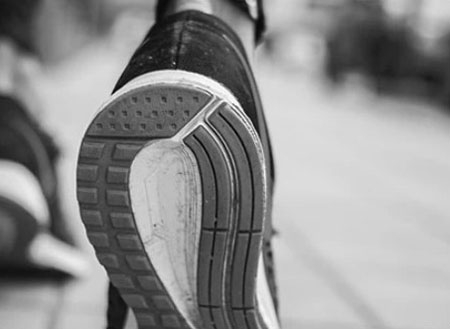Not long ago, I had a casual conversation with someone who joked about the state of their feet. They claimed they could never be a foot model (who can?) due to this bump or that lump or that atrocious-looking toe. I asked if I could see the affected foot, which revealed a bunion and bunionette. I explained to them that those are orthopedic issues that can be rectified with surgery if problematic. They proceeded to exclaim, “I never knew you could actually do something about my ugly feet! Who should I see!”. The exclamation is about half true. We certainly have foot specialists who can operate on feet, but not just because a patient complains they are ugly. However, often times those ugly feet are also problematic in that they cause pain which alters how someone walks, which can in turn start to cause problems in the ankle, knee, hip, and back. To learn more about those feet, kick off your shoes and socks and read on!
One of the common foot pathologies we see are bunions. Bunions are bony prominences at the base of the great toe and are often degenerative in nature in that they worsen with time. Depending on the severity of the deformity, bunions can make shoes difficult to wear if left untreated. Patients often have to switch to shoes with wider toe boxes to accommodate the deformity and minimize callous formation. Women are more prone to developing bunions, partially due to the poor foot attire we choose for the sake of fashion. Even in wider shoes, patients often find it painful to walk and eventually seek treatment. If conservative treatment has been exhausted, the surgical option would be a bunionectomy, or correction of the bunion.The way in which this is done depends on the severity of the bunion deformity. The soft tissue is released to realign the bones that comprise the joint. Sometimes an osteotomy is involved in order to correct the bony malalignment. Hardware is used to maintain that alignment and the soft tissue is repaired. The procedure does require an open incision and non-weight bearing on that extremity while the surgical area heals. Similar to the bunion is a bunionette (or “Tailor’s Bunion”) which occurs on the opposite side of the foot at the base of the small toe. If conservative management fails, a surgical option is a bunionette correction, which removes the bony prominence.
Another foot pathology that often causes people to look at their feet with disgust is a hammertoe. A curled up or severely bent toe is the result of soft tissue and bony imbalance that causes the middle joint to buckle. Most patients’ complaints with hammertoes is that the middle joint rubs on every shoe they wear. Often times, the middle joint of a hammertoe is red, callused, and sore. Women and folks with flat feet are more likely to acquire hammertoes in the second through fourth toes. Surgical correction requires an open incision, release of the soft tissue, shortening of the bone, and placement of hardware for lasting fixation of the realigned toe.
In all of these procedures, the internal hardware is intended to be left in place as it is small and remains asymptomatic for patients while allowing them restored function in their foot. However, often times, hammertoes also require a K-wire which outwardly protrudes from the tip of the toe and is removed at your clinic appointment once your surgeon is satisfied with the healing. If your aching, ugly feet could use some attention to get you back into your favorite pair of kicks, set up a consult with Dr. Viehe or Dr. Zhu here at Orthopaedic Associates of Wisconsin in Pewaukee!

